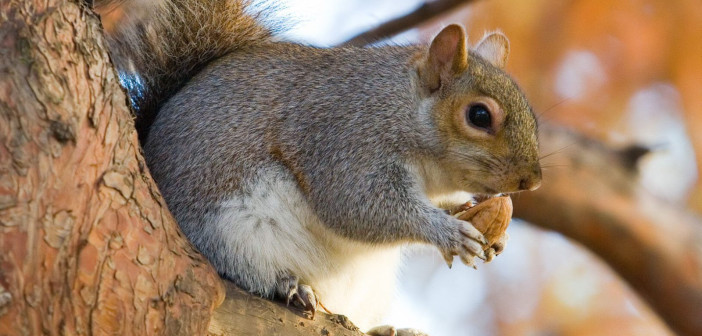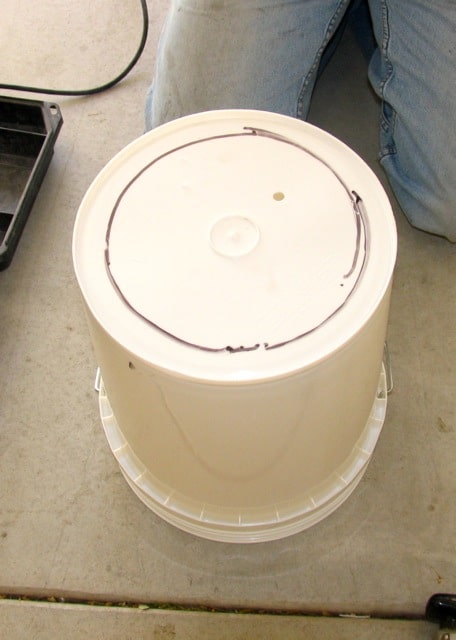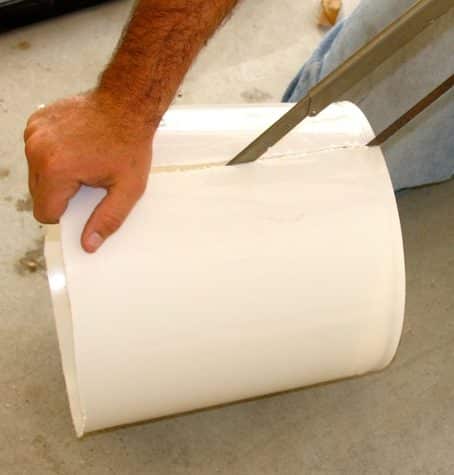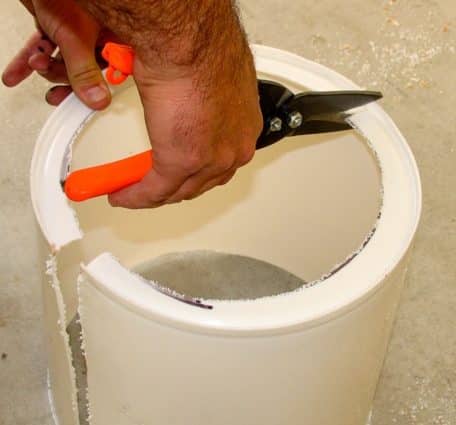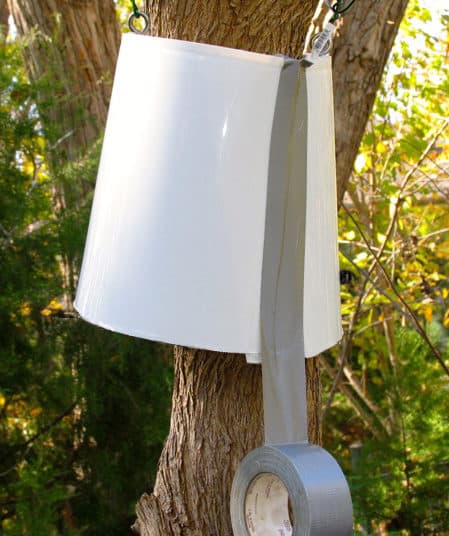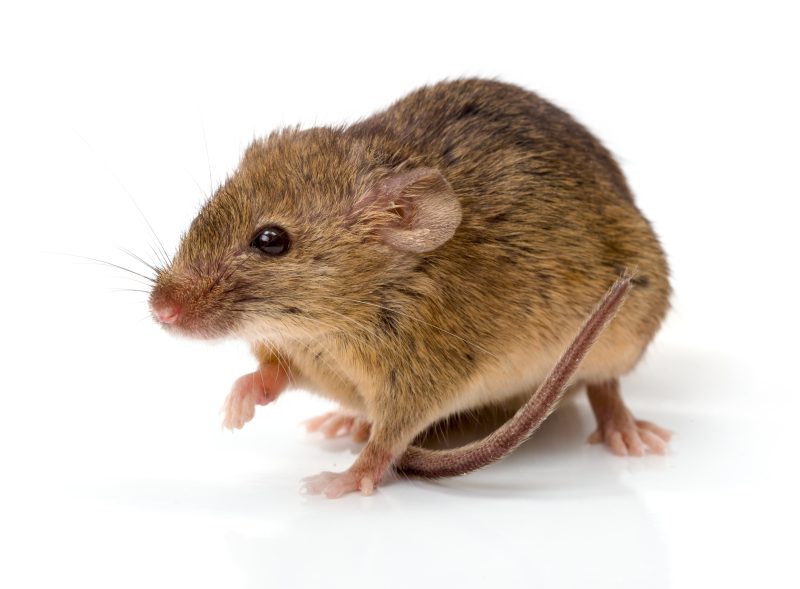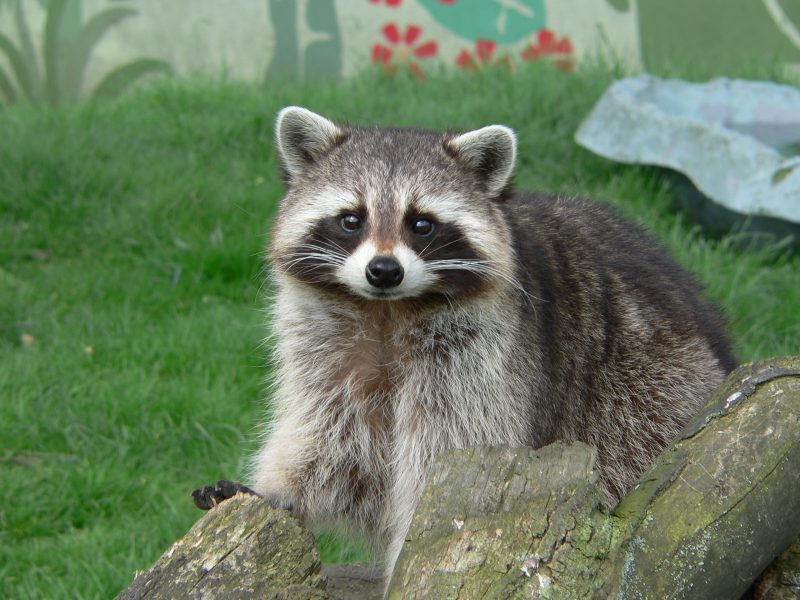It should be enough that we’re forced to battle squirrels year-round over control of our bird feeders. But, no, there are the holes they dig in our lawns time and time again, the veggies and fruits they leave half-eaten and rotting in our garden. And, when they aren’t chewing up tree bark, they’re tearing off twigs and leaves for nest-building. In the fall, we find them nipping off the precious seed-bearing tips of branches to munch on.1 Aargh!
Trees—no surprise here—play a significant role in the lives of tree squirrels. First, unless they can find a cozy attic, they live in them year-round. They provide food: in summer, delicious fruits; in fall, acorns, nuts, and seeds. In late winter, when food is most scarce, hungry squirrels will strip bark and eat the underlying tender and sweet cambium layer. Trees are also safe havens away from predators.
By design, a wildlife-friendly yard includes trees favored by wildlife, and we should expect them to be used and enjoyed, whatever the outcome. Sometimes, though, we plant one we’d like for birds, bees, butterflies—and humans—to enjoy and the squirrels not to destroy.
Scour the internet for solutions to the problem, and here’s what you’ll find: Instructions to spray trees with cayenne pepper (but you’ll have to re-spray every time it rains, and it usually doesn’t deter them, anyway.) Spray deer repellent (again, you’ll have to re-spray after rainfall). Hang a fake bird of prey in the tree to scare them away (Really? They’re way too smart for that to work very long). Live-trap and relocate squirrels (others will quickly fill the void.)
If you’re reading this page, you’re looking for a way to protect your tree(s). The truth is, there seems to be no lasting solution other than to plant your trees away from jumping-off places, such as other trees, roofs, and electric and cable lines—squirrels can leap 8 to 10 feet (2.4 to 3.0 m) horizontally—and to protect them with baffles.
A baffle is a slick sheet of metal or plastic that fits around the trunk, acting as a barrier to keep squirrels from climbing up. The slippery surface prevents them from clinging to it—they slide back down. You can find baffles online, but they’re all designed for bird feeder poles. If the circumference of your tree is small enough for one of those, by all means, use it. Just ensure the bottom of the baffle will hang 5 to 6 feet (12.7–15.2 cm) above the ground’s surface.
Want to try your hand at a homemade baffle? They aren’t hard to make. Here are two ways:
Make a metal squirrel baffle
A metal baffle is the most durable. Sheet metal is expensive, and you may have to purchase it in a roll that’s more than you need. Select a 2-foot-wide roll (61 cm). Cut the metal larger than the circumference of the trunk. (Be careful, the metal edge will be extremely sharp.) Don’t make it too snug; allow for tree growth so it can be enlarged later when it begins to fit too tightly. Roll the baffle into a cone shape, tighter at the top than the bottom. Or leave it straight, like a stovepipe, but not so loose-fitting that squirrels can skinny up the tree inside it. Remove any interfering limbs and mount the baffle so that the bottom is 5.0 to 6.0 feet (12.7–15.2 cm) feet above the ground because squirrels can jump 8.0 feet (20.3 cm) high.
Easy-to-make plastic baffle
This inexpensive alternative to sheet metal might work for you. Just get a 5-gallon (4.2 imp gal) paint bucket (available at any hardware or paint store for only a few dollars), some wire (not too thin) to hang it, and two or three eye bolts. Power tools aren’t necessary, but a hacksaw and keyhole saw will make the job easier.
Measure the circumference of the tree trunk and draw a corresponding size on the bottom of the bucket. Our example will fit a tree trunk that will push the bucket nearly to its limit. The size shown here is 8.0 inches (20 cm) across, which will wrap around a trunk about 6 inches (15 cm) or smaller (you won’t want to choke the tree).
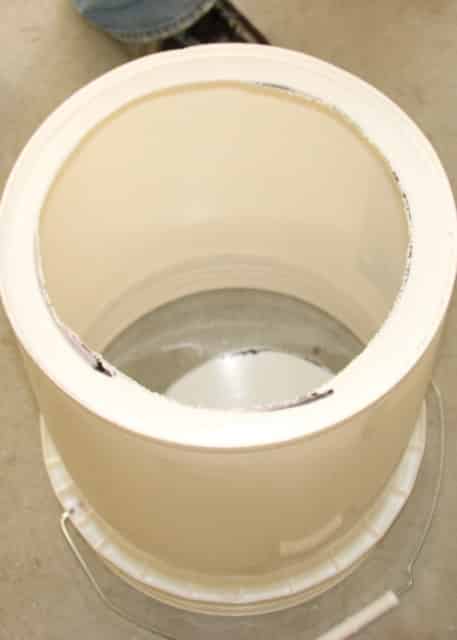
We used a jigsaw to cut out the bottom, but you can also do it with a keyhole saw, tin snips, wire cutters, or even a heavy-duty utility or carpet knife.
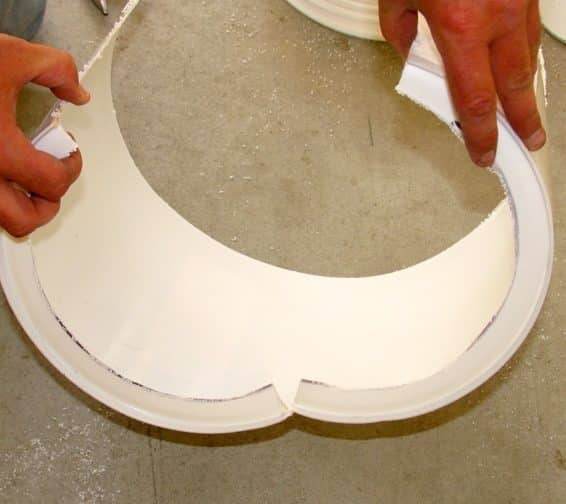
The V-notch will allow you to 1) expand the two sides of the bucket so you can fit it around the tree and 2) overlap it into a cone shape.
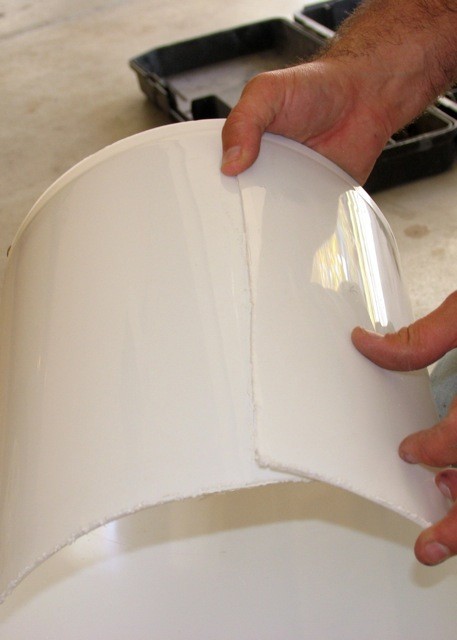
Overlapping the top more than the bottom will form it into a cone shape. The more overlap, the more extreme the shape will be. You can also leave it straight, like a stovepipe if that’ll work better for you.
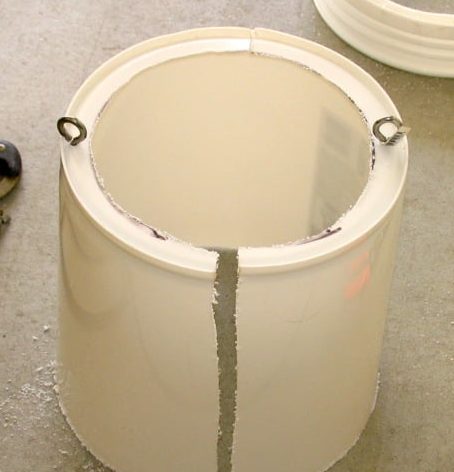
Add eye bolts. If you wish, you can smooth the ragged edges with a file before proceeding to the next step.
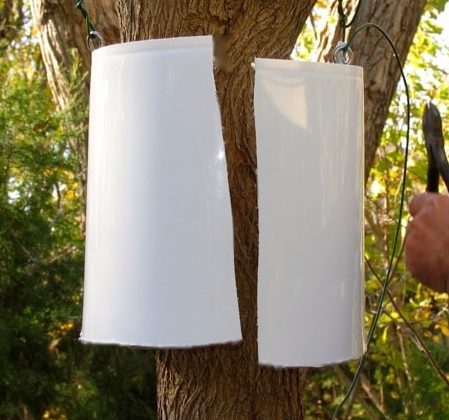
Attach a wire(s) to the eye bolts and loop it over branches above, through a fork in the tree, or whatever works to hold the bucket in place. Secure the sides of the bucket together with flat-head screws (facing inward) at the top and bottom.
And that’s it! No, our display version isn’t pretty, but once it has a coat of brown paint, it’ll be much less conspicuous. Squirrels may climb up the tree trunk, but they’ll find themselves inside the baffle and can’t get through the top of it. If they jump onto the outside, they’ll slide off. Remember, it must be positioned so the bottom is at least 5.0 to 6.0 feet (12.7–15.2 cm) above the ground so that squirrels can’t jump above it.
| 1 Squirrels can kill a limb if they strip off more than 50 percent of its circumference or 30 percent of its leaves. |
More reading
How to attract birds to your yard
Is your yard a flyby?
How to design a backyard wildlife habitat
How to protect trees from squirrels How to build a small backyard pond All about Fox and Gray Squirrels

